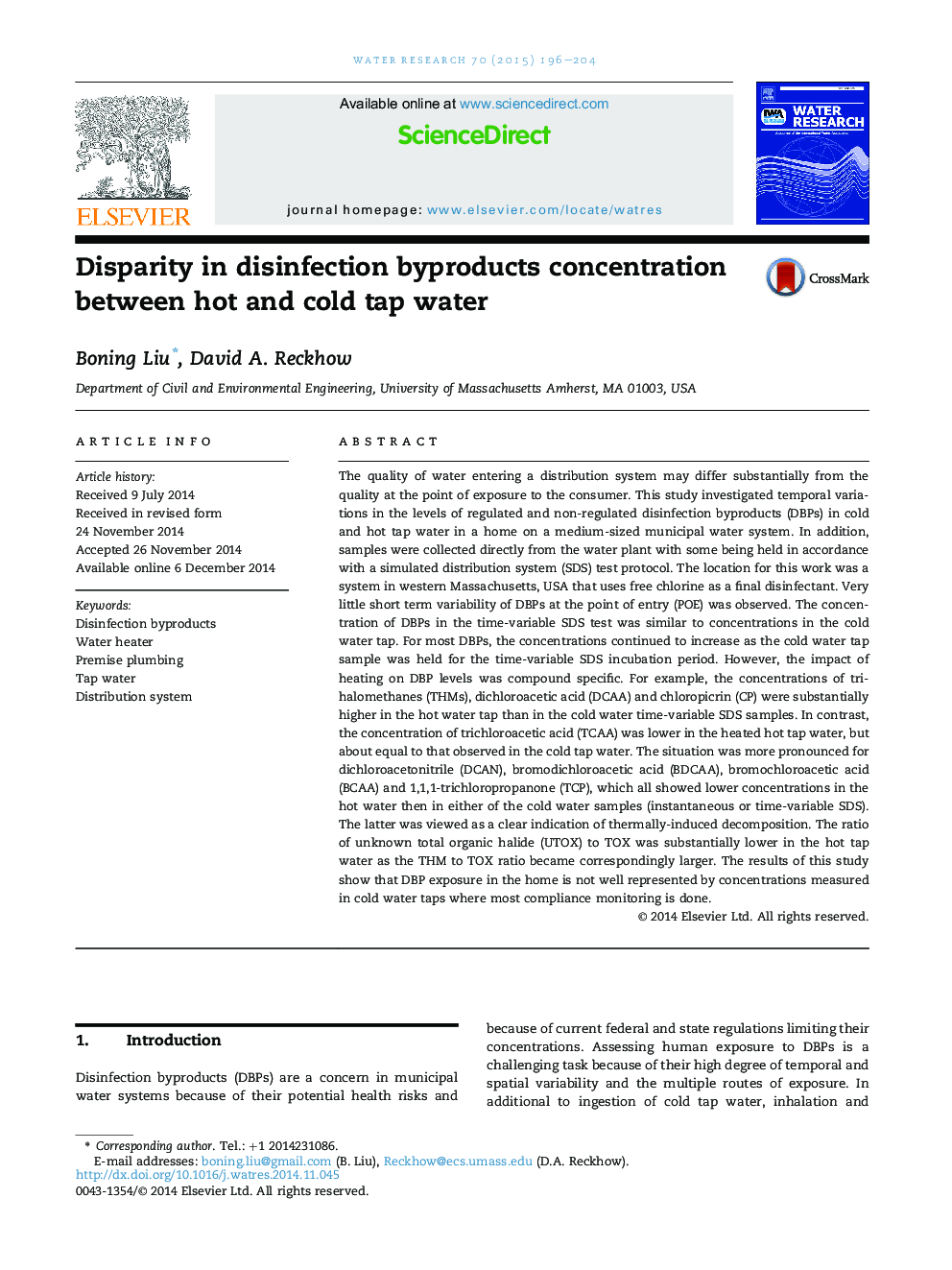| Article ID | Journal | Published Year | Pages | File Type |
|---|---|---|---|---|
| 4481305 | Water Research | 2015 | 9 Pages |
•Temporal variation regulated DBP and non-regulated DBP in the tap water were studied.•Simulated distribution system water study to verify the impact of water age on DBP formation and degradation.•Continuous heating and water tank flushing scenarios were investigated.•DBP exposure in the home is not well represented by concentrations measured in cold water taps.
The quality of water entering a distribution system may differ substantially from the quality at the point of exposure to the consumer. This study investigated temporal variations in the levels of regulated and non-regulated disinfection byproducts (DBPs) in cold and hot tap water in a home on a medium-sized municipal water system. In addition, samples were collected directly from the water plant with some being held in accordance with a simulated distribution system (SDS) test protocol. The location for this work was a system in western Massachusetts, USA that uses free chlorine as a final disinfectant. Very little short term variability of DBPs at the point of entry (POE) was observed. The concentration of DBPs in the time-variable SDS test was similar to concentrations in the cold water tap. For most DBPs, the concentrations continued to increase as the cold water tap sample was held for the time-variable SDS incubation period. However, the impact of heating on DBP levels was compound specific. For example, the concentrations of trihalomethanes (THMs), dichloroacetic acid (DCAA) and chloropicrin (CP) were substantially higher in the hot water tap than in the cold water time-variable SDS samples. In contrast, the concentration of trichloroacetic acid (TCAA) was lower in the heated hot tap water, but about equal to that observed in the cold tap water. The situation was more pronounced for dichloroacetonitrile (DCAN), bromodichloroacetic acid (BDCAA), bromochloroacetic acid (BCAA) and 1,1,1-trichloropropanone (TCP), which all showed lower concentrations in the hot water then in either of the cold water samples (instantaneous or time-variable SDS). The latter was viewed as a clear indication of thermally-induced decomposition. The ratio of unknown total organic halide (UTOX) to TOX was substantially lower in the hot tap water as the THM to TOX ratio became correspondingly larger. The results of this study show that DBP exposure in the home is not well represented by concentrations measured in cold water taps where most compliance monitoring is done.
Graphical abstractFigure optionsDownload full-size imageDownload high-quality image (166 K)Download as PowerPoint slide
